Natural houseplant fertilizers help to keep your indoor plants healthy and thriving.
There are many different items that you can use as a natural plant fertilizer and you probably have a few of these in your home already.
Here are 10 natural fertilizers for indoor plants.
This post contains affiliate links. Please read the disclosure for more info.
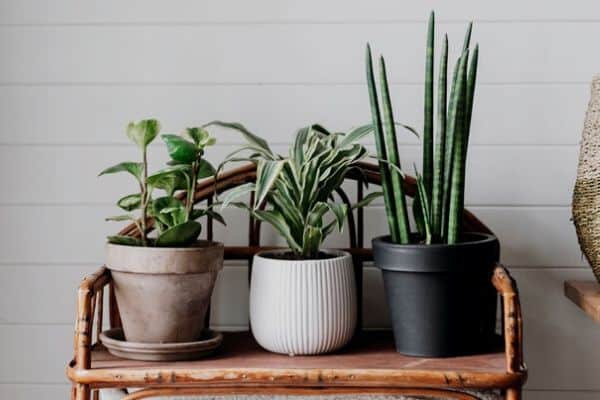
The reason natural houseplant fertilizers work so well is because they add essential nutrients like potassium, nitrogen, calcium, magnesium and phosphorus to the soil.
Natural fertilizers break down slowly so your indoor plants will have a long lasting supply of nutrients to support their growth.
You can make a homemade liquid fertilizer for indoor plants using one or a combination of these natural ingredients.
10 NATURAL HOUSEPLANT FERTILIZERS
1. Banana peels
Banana peels are normally thrown in the compost or trash but they’re a rich source of potassium and they also contain small amounts of nitrogen, phosphorus and magnesium.
Banana peels are an ideal slow release natural houseplant fertilizer and there are a few ways to use them.
You can lay the banana peel directly on the potting soil or cover it over with a small amount of soil to reduce the smell as it breaks down.
You can also cut the peel up into small pieces and mix it into the soil before potting a new plant or blend the peels and mix with water to make a nutritious natural liquid fertilizer for your plants.
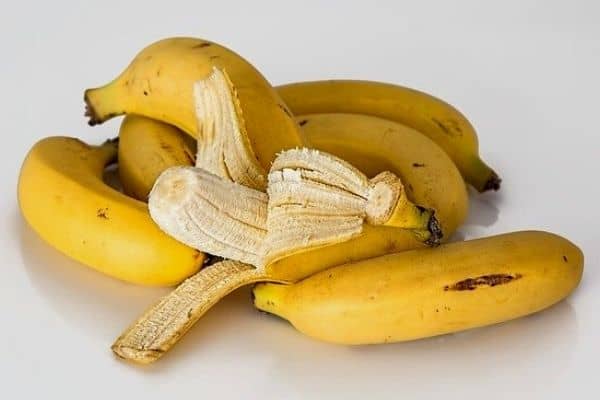
2. Eggshells
Eggshells are another great natural fertilizer for indoor plants.
They’re a rich source of calcium and help to reduce acidity in the soil.
Eggshells also contain phosphorus and other minerals to help your houseplants grow.
Before using eggshells on your plants you’ll need to remove the inner membrane, wash them and allow them to dry.
You can crush the eggshells and mix them into the soil or soak them in water overnight and use the liquid to water your plants.
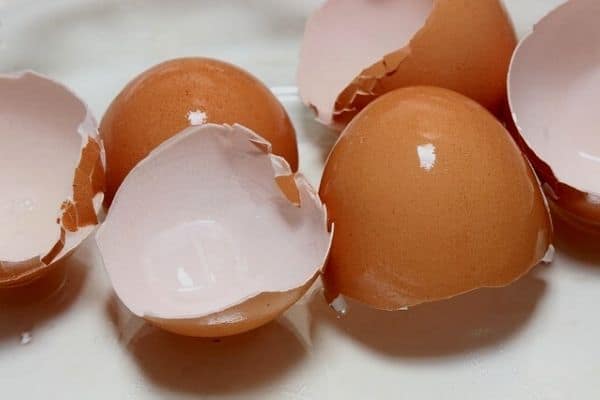
3. Worm tea
Worm farms are a great way to turn kitchen scraps into natural fertilizer for your plants.
Place your fruit and vegetable scraps in the top of the worm farm and the worms will break it down to create a nutritious liquid tea for your plants.
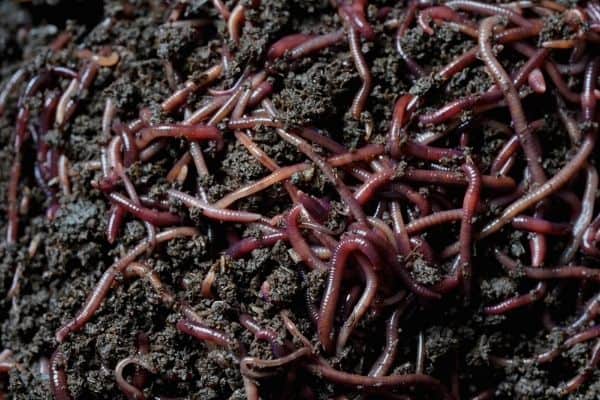
If you don’t have enough space for a worm farm, another great option is an indoor compost bin that breaks down kitchen waste with the help of beneficial bacteria.
The Bokashi system produces a nutritious liquid that you can dilute and use to water your indoor plants.
4. Cooking water
The water that you use to boil or steam your vegetables is packed with nutrients that indoor plants love.
Once you’ve finished cooking, allow the water to cool down and use it to give your houseplants a nutritious drink.
5. Coffee grounds
Coffee drinkers will be happy to know that coffee grounds can be used to fertilize houseplants.
Mix a scoop of coffee grounds with potting mix before planting or combine the coffee grounds with water and use the liquid to water your plants.
Coffee grounds will make the soil more acidic so it’s best to use this natural fertilizer on plants that like acidic soil like african violets, jade plants, christmas cactus and ferns.
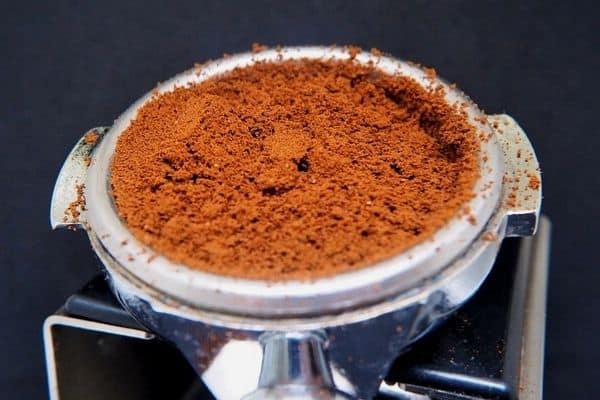
6. Green tea
If you drink green tea you can save the used tea bags and use them to create an easy and inexpensive homemade houseplant food.
Empty the tea leaves from the bag and place them on the soil or brew them in water to create a nutritious liquid fertilizer for your indoor plants.
Similar to coffee grounds, green tea is best for plants that like acidic soil.
RELATED: How To Use Green Tea To Fertilize Houseplants
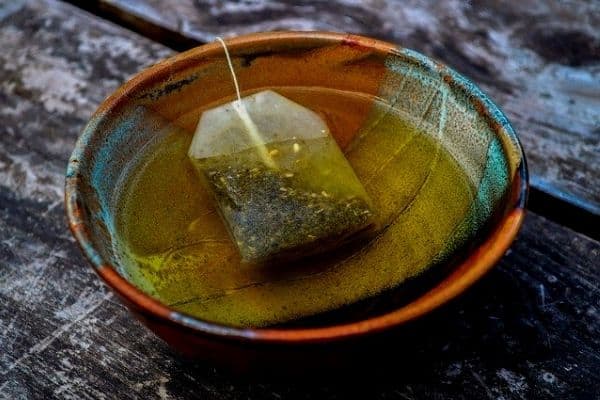
7. Epsom salt
Epsom salt contains the minerals magnesium and sulfate, which help to keep houseplants healthy and thriving.
You can make an easy natural plant fertilizer by dissolving a teaspoon of epsom salts into a litre (about a quart) of water or sprinkle a small amount of epsom salts on the surface of the soil.
8. Fish tank water
Water from freshwater aquariums contains an abundance of nutrients including nitrogen and potassium from the fish waste. [1]
When you clean your fish tank, save the water to use on your plants.
9. Hair
If you cut your own hair or trim the kids hair at home, save it for your houseplants.
You can even use the hair from your hairbrush or from your pet cat or dog.
Mix a small handful of hair into the soil before potting your plant and it will break down to provide valuable nutrients including nitrogen and magnesium to help the plants grow.
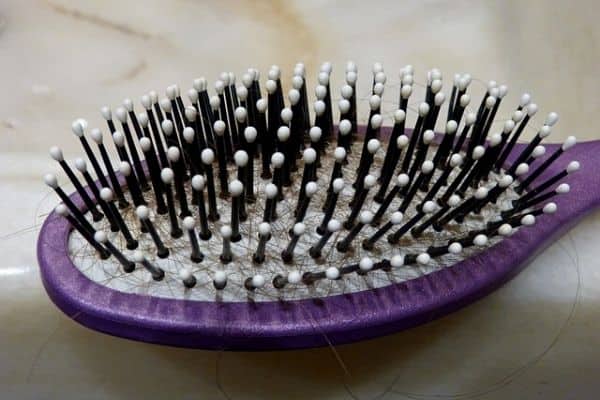
10. Molasses
The last natural indoor plant fertilizer on this list is molasses.
It’s a thick black liquid that is produced from refining sugar cane and it contains a wide range of nutrients that will benefit your houseplants.
Mix one tablespoon of molasses with half a gallon (about 2 litres) of water and use it to give your plants a nutritious drink.
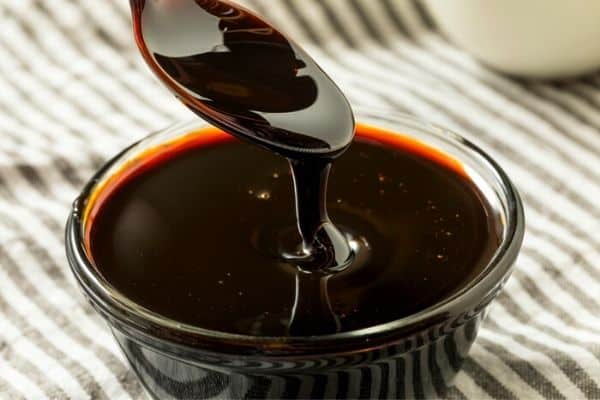
Common questions
Why do houseplants need to be fertilized?
Every time indoor plants are watered, a small amount of nutrients is leached out of the soil.
Without fertilizer the plants will eventually become deficient in key nutrients which will affect their growth.
When is the best time to fertilize indoor plants?
It’s best to fertilize houseplants during spring and summer when they’re actively growing.
Houseplants don’t need to be fertilized during the cold winter months.
So there are 10 ways to create an organic fertilizer for your indoor plants using kitchen scraps or other items you have at home.
RELATED ARTICLES
- How To Use Yogurt In The Garden
- 10 Colorful Houseplants
- How To Make Worm Casting Tea Fertilizer
- 12 Houseplants That Can Tolerate Direct Sunlight
- 10 Easy Care Indoor Plants
Here’s a quick video that shows how to make DIY zero waste plant fertilizer using everyday items from your kitchen.
Have you tried making a natural fertilizer for your plants? Let me know in the comments below.
Are you on Pinterest? I have boards dedicated to Houseplants and Indoor Gardens that you may enjoy. You can also find me on Facebook.

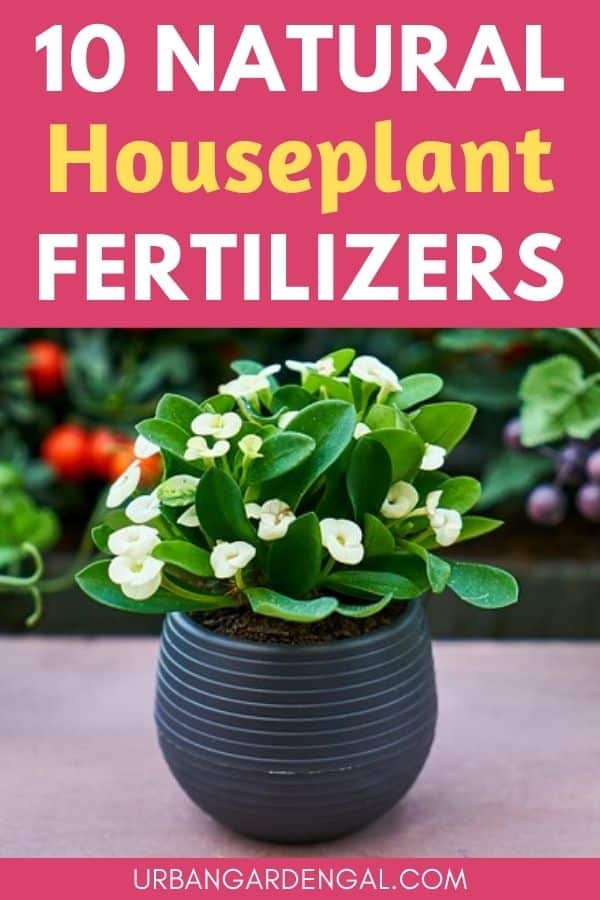
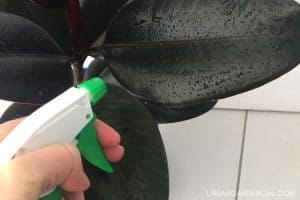
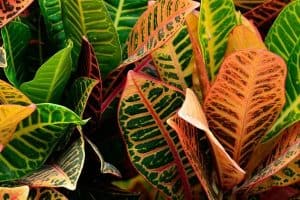
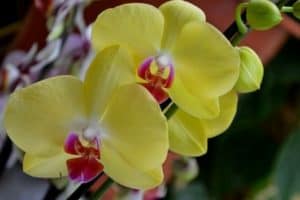
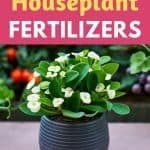
This is great. I’ve never thought of using banana peels or any of these other items to fertilize my plant collection. I’ll definitely try some of these natural indoor plant fertilizers next time.
I had no idea about hair or coffee grounds! Hair may be the best option for me as I shed a LOT of it and my dogs typically go after banana peels and eggs. Thanks!
I love this list of natural fertilizers. I have heard of using banana peels before. I think it is wonderful having all these natural options when caring for house plants.
This is so great – I love using natural options where I can and even more so waste products like coffee grinds. Thank you for sharing
This was really interesting. We have a large backyard composter and use it religiously, but I’ve never considered using some of these with my houseplants before. I love the idea of blending banana peels – all the benefits without the smell. Especially sharing my home with pets who may be tempted to dig a peel out of the soil hahaha
Haha you should see my face as I’m reading this. I’m thinking “wow!” This was a really cool post.
Wow! Natural fertilizers sound great. I just got my first house plant and I really want the best for it.
I’ve used several of these items outside on plants before myself. Egg shells are easily a favorite of mine, especially since I get all of my eggs fresh from friends and not the grocery store. I blend mine up with a magnesium tablet, a couple fish oil pills and some water, and water the plants with it all.
I should really do this. I bake a lot while at home so I use so many bananas and eggs. The peels and egg shells just go straight to the bin. I should totally use them as fertilizers!
Very informative article. Houseplant fertilizers are very crucial topics that we should carefully focus on.
I’ve been thinking about different ways to make a DIY indoor plant fertilizer. I have a few of these things at home so I’ll give it a try. I always prefer natural fertilizers, especially indoors.
But how do I make them into a fertiliser?
Hi Naomi, you can place them on top of the soil or mix them with water to create a DIY liquid fertilizer.
Thank you so much, I needed this information XOX
Thanks Lorraine, I’m glad you found it helpful.
I don’t have the best of luck with plants, but I’m going to try some potted plants for my porch this season, and I’ll be trying for a couple of houseplants too. I can’t wait to try the hair idea! Between me and the cat, they should have a good start. Regarding cooking water, a lot of my vegetable steaming water goes to cooking rice. Would pasta cooking water also work?
Hi Melvin, cooking water from vegetables contains nutrients from the vegetables whereas pasta water doesn’t contain many nutrients. You can give it a try if you’re conserving water but one of the methods listed above would be better to fertilize your plants. Good luck with your potted plants this season!
These suggestions for fertilizing indoor plants naturally are great. I have a question, are they safe to avoid small insects inside the house? Are they a source of gnats or fungus? Thank you
Hi Mayda, yes banana peels can attract fruit flies and gnats so that’s something to be mindful of.